Film Inquiry Recommends: Monte Hellman Films

Alex is a 28 year-old West Australian who has a…
Over at our official Facebook page, we are currently posting daily film recommendations, with each week being a different theme. This is a collection of those recommendations! This week’s theme is the filmography of progressive genre director Monte Hellman.
1. The Shooting (1966, Monte Hellman)
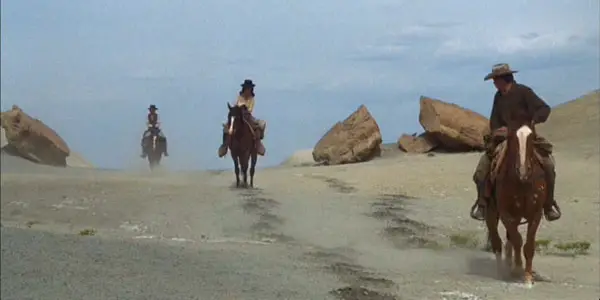
Monte Hellman was just one of the many talented filmmakers that had their careers assisted by one of the greatest independent filmmakers of all time: Roger Corman. Whilst you may argue about the quality of Corman’s films themselves, the impact that they have had on the industry and the amount of people he has helped propel into mainstream success (including Martin Scorsese, Francis Ford Coppola, Joe Dante, James Cameron and more) is crazy, making his honorary Oscar in 2009 totally deserved.
Corman’s low budget tactics can be seen in the production of Hellman’s two very similar acid westerns: The Shooting and Ride in the Whirlwind, which both starred a young pre-stardom Jack Nicholson and Millie Perkins. Whilst known for his huge mainstream success today, Nicholson was one of the key players in the Corman movement, alongside Dennis Hopper, Bruce Dern, Peter Fonda and more – the low-budget anarchic feature films which changed the face of American cinema with their alternative features which became big hits.
The Shooting is about Willet Gashade (Warren Oates), an ex-bounty hunter, and his feeble-minded partner Coley Boyard (Will Hutchins), who are approached by a mysterious unnamed woman (Millie Perkins) who offers them money to guide her through the desert, without telling them why. The group undertake the perilous journey through the expansive empty desert when they are eventually tracked down by Billy Spear (Jack Nicholson), an eruptive gunslinger who was also hired by the woman to join them, which leads Willet to try and figure out why. Whilst the film’s marketing frequently highlights Nicholson as the lead character, it’s really the terrific character actor Warren Oates who takes charge here, starting a partnership with Hellman that would continue into Two-Lane Blacktop and Cockfighter, being one of the key components to Hellman’s best films.
The Shooting is an existential, unpredictable Western that avoids the typical storytelling and aesthetics of the typical American Western that were still being pumped out at the time. The film failed to find any theatrical release after it was made due to lack of interest, which lead to the film becoming extremely obscure. Until the success of Hellman and Nicholson’s later films demanded an outspoken fanbase ensuring a release for the film, leading to many retrospective positive reviews, citing it as one of the first acid Westerns.
Acid Westerns are a psychedelic, arthouse type of Westerns which avoid the standard Western stories and experiment with the genre, famous examples including The Hired Hand (also starring Oates) and Jim Jarmusch’s underrated Dead Man, which gave Johnny Depp one of his best performances.
2. Two Lane Blacktop (1971, Monte Hellman)
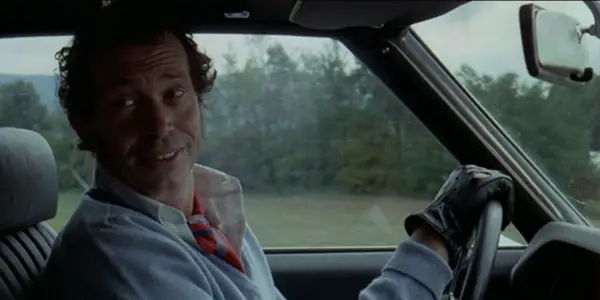
The king of existential car movies, Two Lane Blacktop is one of Hellman’s best films, and one of Warren Oates many great performances. Headlined by musicians James Taylor and The Beach Boys drummer Dennis Wilson in their only starring roles in film, as The Driver and The Mechanic, two unnamed men who silently cruise the country making money in various car races in their Primer Grey 55 Chevy which is always underestimated by their opponents.
The two men cruise forward but with no destination planned, at some point they pick up ‘The Girl’ (Laurie Bird) who joins them on their never-ending journey. After some time, they meet G.T.O. (Warren Oates), a loud-mouth older man in a flashy G.T.O. car, who decides to race the team across country, but as the race goes on, it’s largely ignored and they start to form some form of bond.
Some people may find the film boring, as it’s a film that lacking in overt music score and lacking a formal plot, it makes up for it in its message and Hellman’s careful direction. Any film featuring Warren Oates is worth watching as well, as G.T.O. is a man constantly lying, trying to find meaning in life by trying to impress other people and best others. Hellman made some great films after this, including Cockfighter and China 9 Liberty 37, some of his best alternative genre titles.
3. Ride in the Whirlwind (1966, Monte Hellman)
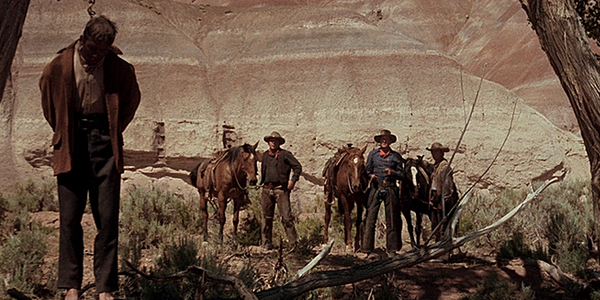
Made back-to-back in the same location with The Shooting, Hellman’s other acid western Ride in the Whirlwind is another existential distinctive western film which shares a majority of cast, crew, locations and story beats as The Shooting. Much like Robert Bresson, Wim Wenders, Jim Jarmusch and other similar directors, Monte Hellman has a knack for taking the standard genre picture, may it be the Western, road movie, horror and more, and create his own unique arthouse versions of them.
Whilst The Shooting was a minimalistic road movie with a central mystery guiding the story, Ride in the Whirlwind is a more energised mistaken-identity thriller, which is another star vehicle for the young Jack Nicholson. Nicholson also co-wrote and produced the film alongside Hellman, one of his bigger films before his breakout success with Easy Rider.
When three innocent cowboys, Wes (Jack Nicholson), Vern (Cameron Mitchell) and Otis (Tom Filer) stumble upon an outlaw who has been hung by a band of vigilantes, they decide to shelter themselves in a local bar. Inside the bar they find the bartenders are actually a group of men who just killed a stagecoach and robbed all the merchandise (including future arthouse star Harry Dean Stanton). Before the trio can do anything, the vigilante gang rush in and attack the bar, confusing the innocent trio for being part of the gang, thus they are forced to become fugitives until they can clear themselves of the growing suspicion.
Much like the Spaghetti Western genre that was on the rise at the time of filming, Ride in the Whirlwind is a deconstructive Western which looks at the role of ‘good guys’ and ‘bad guys’ when dealing with the Western narrative and a larger commentary on vigilantism in society. The film is quite bleak, a drastic change from the usual American mainstream Westerns that had come before it, a presage of the other genre deconstructions that would follow in the 1970’s when independent cinema became the Hollywood game-changers. Ride in the Whirlwind is a much more accessible and straightforward Western than The Shooting, an underrated film that much like most of Monte Hellman’s filmography, has become quite sadly unknown in the mainstream collective’s knowledge of films.
4. China 9, Liberty 37 (1978, Monte Hellman)
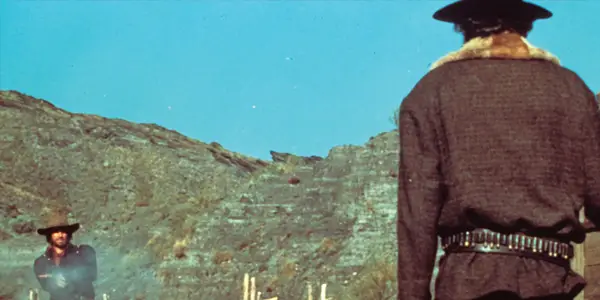
This American-made Spaghetti Western is a great film, which is sadly under-seen due to its complete unavailability on any media platforms (all DVD releases are public domain copies which are terrible quality). China 9, Liberty 37 is about convicted gunman Clayton (Italian star Fabio Testi) who is given a chance at saving himself by killing Matthew (Hellman regular Warren Oates), owner of a ranch which is wanted by a railway company. Visiting Matthew, Clayton cannot bring himself to kill him. On his journey home, he is joined by Matthew’s wife (Jenny Agutter) who thinks she has killed Matthew. Matthew, still very much alive and now angry, teams up with the railway company to take down Clayton and his wife.
The action scenes are well-directed, but some of the special effects have not aged well, a problem that many films of the 70’s and 80’s suffer from. The plot does sound predictable, but is delivered well and has a nice twist at the end which adds some originality to the concept. Sam Peckinpah makes a very rare acting appearance in this film as a novelist. Whilst he’s not the best actor, it’s always great to see the legendary director trying something different.
Hopefully one day this film will receive an official release on Bluray or DVD so wider audiences can watch it, as the film’s small reputation suffers from the current available print of the film being of poor quality. The film has screened on the American channel TCM several times in a proper print, so it does exist.
5. Cockfighter (1974, Monte Hellman)
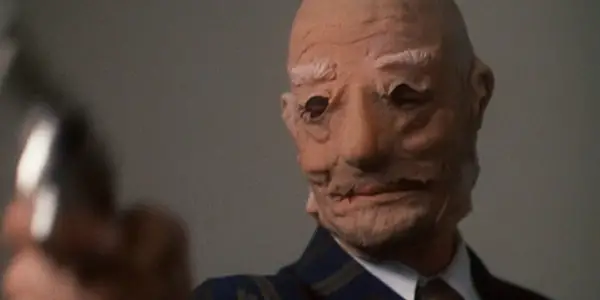
In his third collaboration out of four films with Hellman, Cockfighter provides Warren Oates for one his best leading roles, robbing the man of one his strongest assets – his voice. Much like Marvel’s Daredevil, robbing Oates of his terrific dialogue delivery just heightened his other tools, making him deliver one of his greatest physical performances which shows the power of non-verbal communication on-screen and how that can rival dialogue in showcasing emotion.
Despite being a great Shakespearean character study, the film failed to find an audience back in the 1970’s, with producer Roger Corman claiming it was the only film he made in that period that lost money, even when he rebranded the film as “Born To Kill” and selling it as a trashy revenge thriller. It is understandable that audiences back in the 70’s may have been confused, despite the progressive independent movie pumping out arthouse hits, Cockfighter is a film with the aesthetic and trappings of a trashy grindhouse title which exploits the act of c*ckfighting, but with Hellman’s smart direction and talented cast elevates it above its originally destined B-Movie status.
Oates stars as Frank Mansfield, a man obsessed with winning the “Cockfighter of the Year” medal. A loud-mouth braggart, his boastful attitude lead him to lose his best rooster in a casual hotel-room set c*ckfight, which made Frank make an internal bet with himself: he won’t speak a single word again until he wins that medal to redeem himself of his ways. Fighting in the new c*ckfighting tournament proves to be difficult for Frank due to a lack of funds, which forces him to put up his car and trailer as a bet in order to just compete. Between his financial difficulties and lack of c*ckfighting chicken, he is constantly harassed by his girlfriend Mary Elizabeth (Patricia Pearcy) to quit the business and settle down. Due to a lack of options, Frank is forced to team up with fellow c*ckfighter Omar (Richard B. Shull), which just adds more complications to his plans.
Rounding off the cast is an array of B-Movie stars, including Harry Dean Stanton, Laurie Bird, Ed Begley Jr, Millie Perkins and Steve Railsback, with the cast feeling like a best-of Monte Hellman filmography (much like Tarantino’s cast in his recent film The Hateful Eight). Cockfighter continues Hellman’s trend of using genre cinema to explore the theme of existentialism, using the usual tropes of the associated genre in unexpected and new ways, creating original and refreshing films out of used cinematic materials.
Like Hellman’s other films, Cockfighter is a film which is a pain in the ass to find officially. Some budget DVD distributors have released it but never in full definition, robbing the film of its potential cinematic look to many newcomers who haven’t had a chance to witness it theatrically. Whatever way you can, any fans of Warren Oates, Monte Hellman or just alternative 70’s cinema in general should track down this film.
6. Silent Night, Deadly Night 3: Better Watch Out! (1989, Monte Hellman)
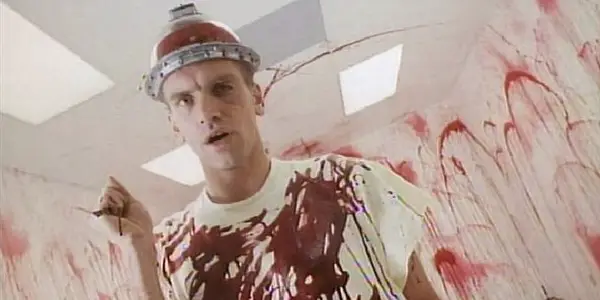
When Silent Night, Deadly Night: Part 2, the offbeat sequel to the trashy Christmas horror film, failed to do well at the box office, producers decided to keep the franchise going via straight-to-DVD films, the fate for many once-great horror franchises (Pumpkinhead, Candyman, HellRaiser and more). Independent producer Arthur Gorson was put in charge of creating the third film, given orders in March of 1989 to have it done for Christmas of the same year. Gorson was friends with Monte Hellman, who he suggested as director of the project.
The story behind getting Hellman on board the film is supposedly that Hellman was suffering from a horrific flu when Gorson approached him to do the film which greatly affected the mentality behind signing up. Even when Hellman got better and realised what he had done, he didn’t really regret the decision, taking over the project by completely rewriting the script and making it as fast as he could. Hellman states this is his best film that he’s made by production standards, because he managed to make it under budget and under the time constraints, a feat which he struggled with on his earlier acid Western films.
After being shot down by police at the end of the previous film, Ricky Caldwell (Bill Moseley) has been left comatose for six years, with doctors attempting to bring him back to life. With a glass dome fixed onto his head (which doesn’t make any sense because in the previous film he is never shot in the head) he finally wakes up and escapes from hospital. Due to a tenuous connection through ESP and telepathy, Ricky Caldwell decides to track down Laura, a young blind telepathic woman who Ricky feels he has a connection to. In his journey to hunt down Laura, in true B-Movie fashion, Ricky leaves a trail of dead bodies in his path for revenge (largely undetermined revenge).
Whilst not one of Hellman’s best directional efforts, it’s worthing checking out for how completely bizarre it is, and it’s a demonstration of Hellman flexing his old school genre muscles from his Corman days. Horror film veteran Bill Moseley replaced Eric Freeman from the previous film, making him a mute with an unexplained glass dome that exposes his brain, making him one of the weirdest horror antagonists that I’ve seen.
The Silent Night, Deadly Night series is one of the most inconsistent horror franchises to exist, the original film was a fairly straightforward exploitative piece, the sequel was made up of 50% footage from the first film and 50% retconning flashback sequences and with this third film, Hellman completely flipped the direction of the films with this sci-fi heavy experimental film that is worth a look by die-hard horror fans mostly.
7. Iguana (1988, Monte Hellman)
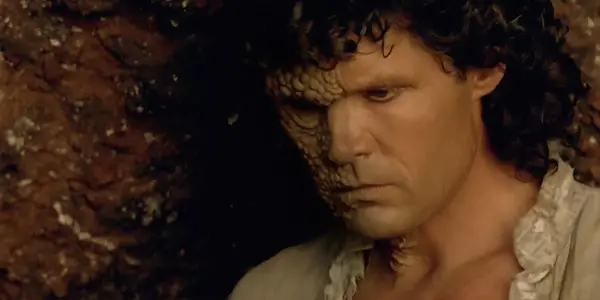
Set during the 19th Century, a severely facially-disfigured sailor named Iguana (Everett McGill) is constantly bullied and tormented by his fellow ship-mates due to his alarming appearance on the whaling ship they all work on together. During one opportune night, he decides to escape the ship and manages to find a small unknown island. Due to his advanced knowledge over the tribespeople on the island and his different appearance, he decides to make himself the ruler of the island, taking command with a brutal iron fist.
He slowly trains the islanders to try and fight back against mankind, turning the innocent people into his personal army for undetermined vengeance. Any people that happen to wash up on his island are subjected to cruel torment and eventual death, until the appearance of Carmen (Maru Valdivielso), a woman who he forces to become his mistress.
Made after a ten-year break from directing (China 9 Liberty 37 was his previous film), Iguana showcases a more melodramatic side in Hellman’s filmography, a fragmented mix of drama, horror, romance and survivalist action cinema. Whilst the subject matter and dark nature of the film may put off some people, Hellman’s always strong command of the camera and inbuilt knowledge of genre tropes makes sure that Iguana is still a great film in his filmography, even though it’s one of his more offbeat additions.
What are your thoughts on Monte Hellman‘s filmography?
Does content like this matter to you?
Become a Member and support film journalism. Unlock access to all of Film Inquiry`s great articles. Join a community of like-minded readers who are passionate about cinema - get access to our private members Network, give back to independent filmmakers, and more.













